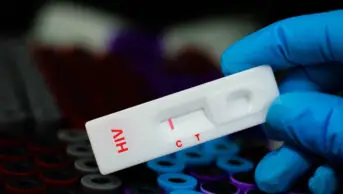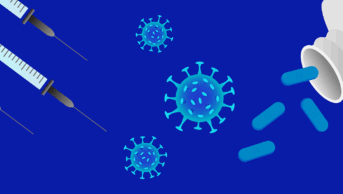Misuse of codeine can cause serious harm. There are restrictions around use of the medicine, but people still find ways to misuse it and pharmacists should be aware of their methods. Here, we report a case of a patient extracting codeine from over-the-counter (OTC) products to highlight the role pharmacy can play in preventing its misuse.
A patient presented to hospital with shortness of breath. During clerking and medicines reconciliation, the patient was found to have been misusing codeine by extracting it from OTC codeine/paracetamol 8/500mg and codeine/ibuprofen 12/200mg. Further questioning revealed that the patient had been using cold-water extraction methods. The patient found these methods through webpages and online forums, which are easy to access using internet search engines.
The patient had previously used codeine linctus to support his addiction; however, he found the product increasingly hard to purchase from community pharmacies after recommendations for its use in cough changed. In October 2010, the Medicines and Healthcare products Regulatory Agency issued advice that OTC products should not be used in children aged under 18 years for dry, unproductive cough (because the risks outweigh the benefits); as a result, pharmacies may have begun to stock and sell less liquid codeine in general[1]
.
The patient said they had bought co-codamol and codeine/ibuprofen tablets from various community pharmacies. The total codeine in the tablets being used daily was 1.33g. Using a pestle and mortar, the patient crushed the tablets into a powder, which was mixed with water and refrigerated for two hours. The patient strained the undissolved matter using a t-shirt or coffee filter paper, and drank the remaining liquid. Codeine dissolves quicker than paracetamol and ibuprofen, so the resulting liquid primarily contains codeine.
There have been studies to investigate methods of extracting codeine from OTC products. For example, Kimerga et al.’s study replicated cold-water extraction methods using aspirin/codeine, ibuprofen/codeine and paracetamol/codeine tablets[2]
. Through mass spectrometry analysis, the study showed that 61–67% of a product’s codeine can be extracted from codeine/ibuprofen, and 42–71% of codeine/paracetamol. It is estimated that 5.5–8.5% ibuprofen and 5.0–9.2% paracetamol can be extracted, respectively; therefore, there is a low risk of overdose and kidney or liver failure, respectively, when the patient drinks the solution[2]
.
Diarrhoea was found to be one of the main side effects of this method. High quantities of magnesium were found in the aspirin/codeine solution, meaning the patient could consume 558–944mg each time; 1.6–2.9g paracetamol and 704–1,088mg ibuprofen could also be consumed, but this is unlikely to cause any harm. However, there are limitations to this study; only 30 tablets were tested at a time, and the patient reported in this short communication extracted from a greater number during each extraction.
In their paper, Kimerga et al. suggest that the abuse of codeine-containing products can be limited by making “proactive steps in the form of better surveillance of misuse and tampering of high-risk opioids”[2]
. Practical suggestions for tamper resistance include the production of crush-resistant tablets, which cannot be easily ground into a powder form for dissolving. The study authors also suggest that opioid tablets could combine an opioid with an opioid antagonist, so that the desired effects of opioid misuse are not achieved if the tablet is manipulated. The tablet could also be formulated such that when it is crushed and dissolved, it forms a viscous substance that cannot be strained.
Community pharmacy staff should be aware of the possibility of patients tampering with codeine-containing products. They should be vigilant if patients display suspicious behaviours, such as frequently purchasing these products.
There are legal restrictions around the maximum quantity of aspirin and paracetamol that can be sold as a pharmacy or general sales list medicine[1]
. There are also restrictions on the sale of codeine- and dihydrocodeine-containing products, owing to the risk of addiction and misuse. In September 2009, the Medicines and Healthcare products Regulatory Agency introduced restrictions on quantity, whereby packs containing more than 32 dose units require a marketing authorisation as a prescription-only medicine. Warnings on packaging, such as ‘Can cause addiction; for three-day use only’ have also been introduced[1]
.
Medicines, Ethics and Practice — the Royal Pharmaceutical Society’s guidance for pharmacists — recommends that only one packet of codeine-containing products, comprising no more than 32 doses, should be sold; however, this is a good practice recommendation and not a legal obligation[1]
. This recommendation does not resolve the issue of patients visiting multiple pharmacies to purchase large volumes of codeine-containing products.
In February 2018, Australia banned the sale of OTC codeine, in response to an increasing number of codeine-related deaths[3]
.
During medicines reconciliation at admission, hospital pharmacists should ensure that they ask patients about their use of OTC painkillers. This is a good opportunity to identify where opiate painkillers are being using inappropriately. When screening and supplying discharge medications, pharmacists should supply quantities of codeine-containing products that are specific to the patient’s indication and history. Patients can be referred to FRANK — England’s national drug education service — for advice on local drug treatment services.
Charlotte Stewart, pharmacist; Sophie McGlen, pharmacist;
Both at Oxford University Hospitals NHS Foundation Trust
References
[1] Royal Pharmaceutical Society. Medicines, Ethics and Practice. 42nd edn. 2018. Available at: https://www.rpharms.com/resources/publications/medicines-ethics-and-practice-mep
[2] Kimerga A, Deluca P, Hindersson P et al. How resistant to tampering are codeine containing analgesics on the market? Assessing the potential for opioid extraction. Pain Ther 2016;5(2):187–201. doi: 10.1007/s40122-016-0053-2
[3] Klein A. Australia bans non-prescription codeine to fight opioid crisis. 2017. Available at: https://www.newscientist.com/article/2116813-australia-bans-non-prescription-codeine-to-fight-opioid-crisis/ (accessed May 2019)


